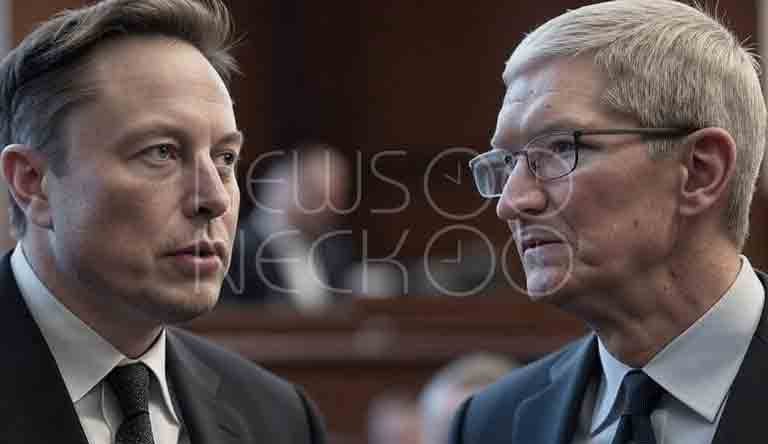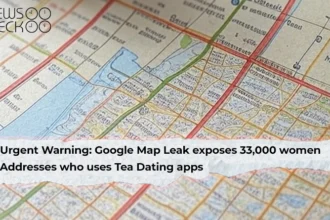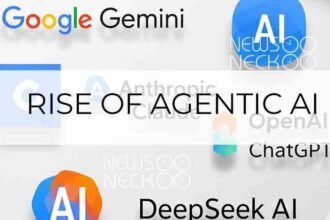Date: October 26, 2023
Author: Junaid Arif
In a dual move that underscores his aggressive stance in the technology arena, Elon Musk is simultaneously painting a radical future for artificial intelligence while launching a legal offensive against two of the industry’s biggest giants. His company, xAI, is promoting a long-term vision where the very concept of smartphones and computers is overhauled, with devices acting as simple “edge nodes” for powerful AI. Concurrently, xAI has filed a landmark lawsuit against Apple and OpenAI, alleging serious anticompetitive behavior that threatens to stifle innovation. This one-two punch highlights Musk’s strategy to disrupt the AI landscape from both a technological and a legal standpoint.
The Elon musk xAI Vision: A World Beyond Apps and Operating Systems
At the heart of xAI’s ambitious roadmap is a fundamental reimagining of how we interact with technology. The current model, dominated by operating systems like iOS and Android that host millions of individual apps, is, in Musk’s view, becoming obsolete.
The xAI vision proposes a future where our devices are primarily “edge nodes.” In simpler terms, your phone, laptop, or wearable would act as a sophisticated terminal or access point. The heavy lifting of AI inference—the process where the AI model analyzes data and makes decisions—would be handled by powerful, remote data centers. However, the key differentiator is how the results are delivered.
Instead of an app opening to display pre-programmed text and images, the AI would be capable of directly generating pixels and audio in real-time to create a dynamic, seamless user experience. Imagine asking your device to plan a vacation. Instead of opening a browser, a travel app, and a weather app separately, the AI would instantly generate a custom video presentation for you, complete with visuals of destinations, voice-over narration, and integrated flight and hotel options—all created on the fly.
This approach would effectively render traditional operating systems and individual apps redundant, replacing them with a single, powerful AI interface that can perform any task through natural language commands. This isn’t just an incremental upgrade; it’s a proposal for a complete paradigm shift in computing.
The Legal Front: xAI Sues Apple and OpenAI
In a separate but equally dramatic development, xAI has initiated a major legal battle. The company has filed lawsuits against both Apple and OpenAI, leveling allegations of anticompetitive behavior that could have far-reaching implications for the entire AI industry.
The lawsuit against OpenAI is particularly complex and personal, given Musk’s history as a co-founder of the organization. The core allegations likely revolve around OpenAI’s shift from its original open-source, non-profit mission to a closed-source, for-profit structure heavily influenced by its primary partner, Microsoft. xAI’s suit probably argues that this move constitutes a betrayal of its founding principles and creates an unfair, closed ecosystem that limits the development and accessibility of true AGI (Artificial General Intelligence) for the broader public.
The lawsuit against Apple, while details are still emerging, appears to focus on the tech giant’s walled-garden approach to its ecosystem. xAI is likely alleging that Apple’s strict control over its App Store, its default app settings (like Siri), and its hardware-software integration practices stifle competition. This makes it incredibly difficult for independent AI companies, like xAI with its Grok chatbot, to achieve a level playing field and reach users on Apple’s dominant iOS platform. By suing both, Musk is challenging what he perceives as a collusive or overly restrictive environment that hinders the open and rapid development of AI.
Connecting the Dots: Vision vs. Obstruction
The two stories are deeply connected. xAI’s futuristic vision of edge nodes and AI-generated interfaces is a direct challenge to the current app-based economy championed by Apple and Google. It also poses a threat to the application-centric AI models developed by OpenAI and its partners.
The lawsuits, therefore, can be seen as a preemptive strike. By legally challenging the existing power structures and their business practices, Musk is not just seeking reparations; he is attempting to clear the regulatory and competitive pathway for his own vision to succeed. He is arguing that the current dominance of these companies prevents the kind of open innovation necessary to achieve the AI-driven future he envisions with xAI.
Potential Implications and Industry Reactions
The potential implications of both developments are massive.
If the xAI vision gains traction, it could dismantle the multi-trillion-dollar app economy and force every hardware and software company to completely rethink their strategies. The success of this model hinges on achieving unprecedented levels of reliable, low-latency AI inference and the ability to safely generate accurate and trustworthy content.
The lawsuits, if successful, could force Apple to open up its iOS platform and compel OpenAI to be more transparent with its technology and governance. However, legal experts anticipate a long and arduous court battle, given the resources and legal expertise of Apple and OpenAI.
The industry reaction has been mixed. Many technologists are excited by the boldness of xAI’s vision, acknowledging that AI-native devices are an inevitable evolution. However, others are skeptical of Musk’s ability to execute and see the lawsuits as a publicity stunt or a tactic to gain leverage. Regardless of the outcome, Elon Musk has once again positioned himself at the center of the most critical debates shaping our technological future.
Frequently Asked Questions (FAQs)
1. What does “edge node” mean in xAI’s plan?
An edge node refers to a user’s device (phone, laptop, etc.) that acts primarily as an access terminal. Instead of doing complex processing itself, it connects to powerful remote servers where the AI computation happens. The device’s main job is to display the AI-generated results.
2. How would AI “directly generating pixels and audio” change my phone?
It would eliminate the need to open specific apps for specific tasks. You would interact with your device entirely through conversation. Want to send a message, edit a photo, or book a flight? You would just ask the AI, and it would generate the necessary text, images, and sounds for that task instantly, creating a fluid and app-less experience.
3. Why is xAI suing Apple and OpenAI?
xAI is alleging anticompetitive behavior. Against OpenAI, the lawsuit likely focuses on its shift away from its open-source roots to a closed, for-profit model. Against Apple, the suit probably challenges its strict control over the iOS App Store and ecosystem, which xAI argues makes it unfairly difficult for other AI companies to compete.
4. Is xAI trying to replace my iPhone’s operating system?
In the long-term vision, yes. xAI is proposing a future where the traditional operating system is replaced by an AI interface that manages everything directly. However, this is a long-term goal and would require a fundamental redesign of both hardware and software.
5. What is “AI inference”?
AI inference is the stage where a trained artificial intelligence model applies what it has learned to new data it receives to make a prediction or generate a response. For example, when you ask a chatbot a question, the process of it understanding your query and formulating an answer is inference.
For more updates, visit Newsneck.













